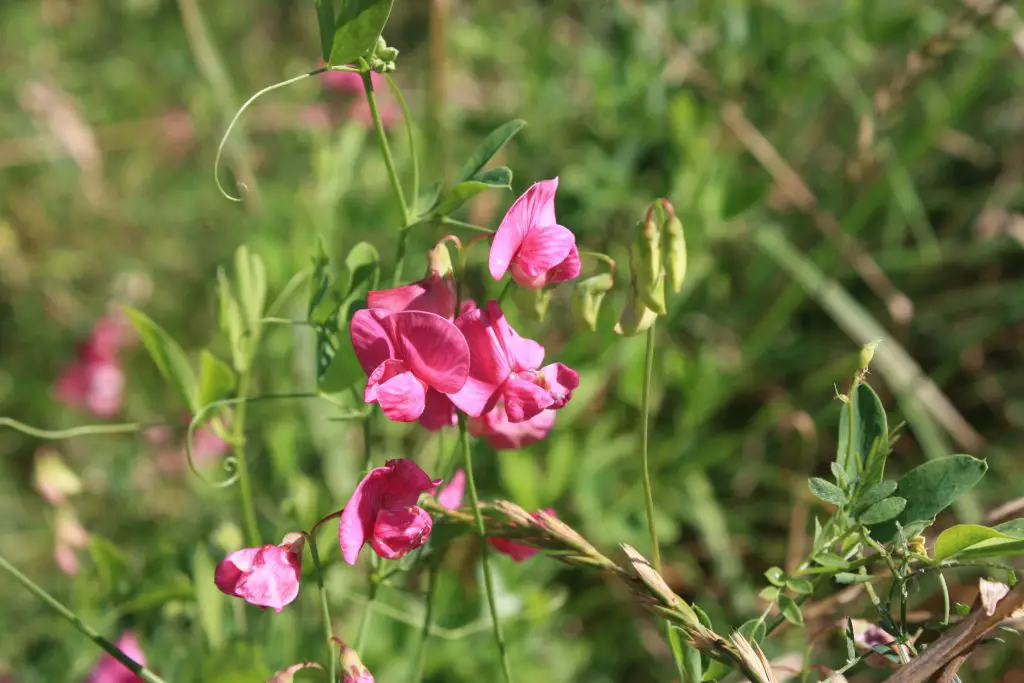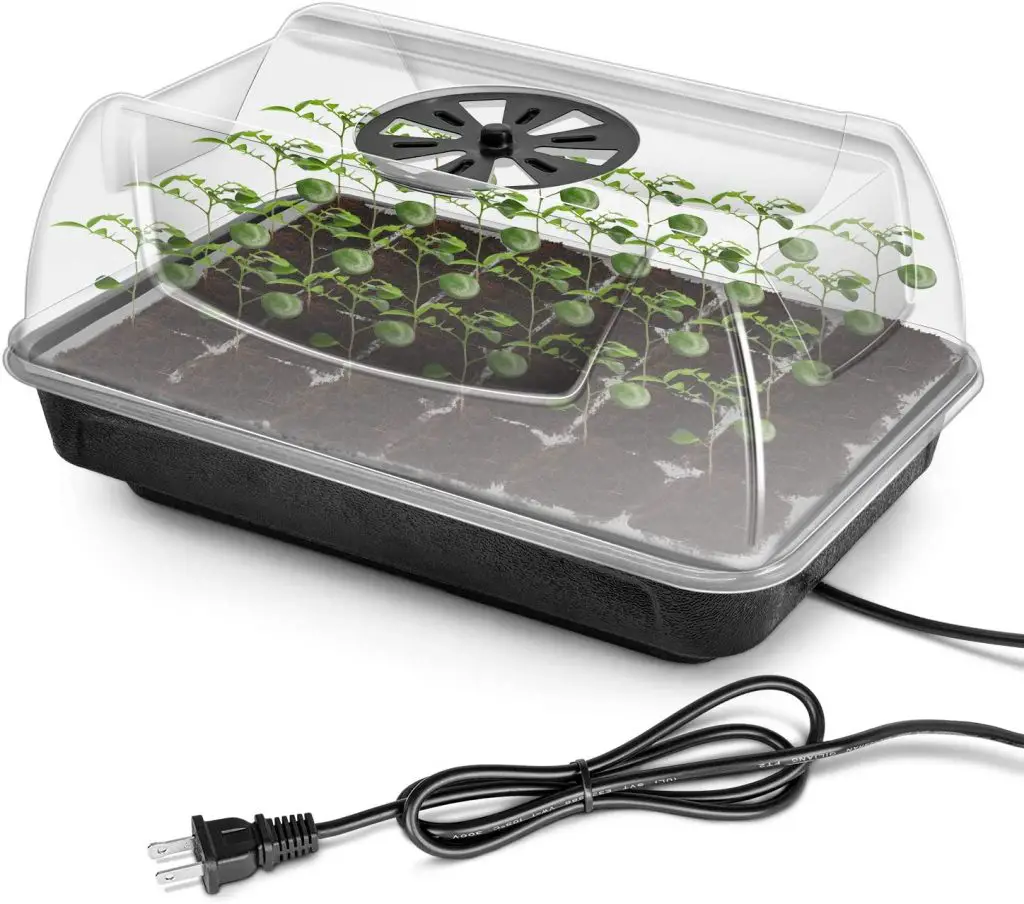How To Grow Sweet Peas Up Canes. Sweet peas are a popular flower in many parts of the world particularly places like the UK where they are regularly grown as cut flowers and exhibited in many competitions. So to get the best out of the flowers do you need to grow them up sweet pea canes and how is that achieved?
Sweet peas can be grown up canes however they do require some support and assistance to ensure that they utilize the structure to optimize their height as they do not tend to be able to climb themselves up the cane successfully. This generally requires you to tie the sweet peas to the canes at regular intervals to ensure that they maintain an upright growth habit. As the string ties on the canes can slip down it is advisable when creating a structure to ensure that there are some horizontal supports.
The type of support structures that are traditionally used with sweet peas are wigwams and pea supports which are usually a series of triangles with horizontal supports that are tied to each of the triangles to build up the strength of the structure. These supports do work well however there is quite a lot of work associated with them because you need to tie the sweet peas regularly to the support structure.

An alternative method that is used by growers quite successfully is to grow the plants in cordons using string. This method produces much higher quality flowers that are more suited to vases inside the house and it also reduces the volume of work associated with maintaining the plants as attaching the plants to the support is much quicker and easier.
This is because instead of cutting a piece of twine and tying a knot at each node of the sweet peas the stem is simply wound around the string as it grows. When using this growing method it is advisable to remove any side shoots and tendrils to ensure that there is only one main stem that gets the maximum amount of light ensuring high-quality flowers.
To create a system of this nature you need to have a strong outer support structure with string lines running from the top of it down to the base of the structure. For the string to be effective it needs to be tight which can be achieved either by burying the string in the ground where the seeds are planted or having a lower piece of cane or bamboo running along the base of the structure to allow the strings to be tied to it.
My personal preference with construction is to have a lower piece on the support structure as it is generally more sturdy and strengthens the overall support structure as well. To see this method in action try watching a 3-minute video below.
How To Grow Sweet Peas
Sweet peas are a relatively easy plant to grow as they germinate readily and can be planted directly into the soil in spring. However, if you live in a warmer climate they can also be planted in autumn to ensure that you get flowering earlier in the year but this is not recommended if the temperatures in your region get the low around 41°F (5°C) in the winter.
The other option to get the plants off to a rapid start is to plant them indoors in a seed tray around 6 to 8 weeks prior to the first frost. This will allow the plants to develop rapidly once they are planted outdoors.
To provide the optimal conditions it is recommended that you use a heated propagation tray rather than just a regular seed tray brought indoors because the temperature control is significantly better. Standard seed trays left indoors will fluctuate in temperature considerably particularly in colder regions at night.
If you are considering purchasing a unit of this type we would highly recommend that you try the ipower heated propagation tray as it is relatively low cost and features a removable tray and humidity dome.
These features are beneficial because the removable tray allows the seed tray to be replaced when it deteriorates over time extending the life of the unit. The humidity dome is also an important feature of the unit as it helps to maintain a warm environment for the seeds to grow. To see the latest price for this item click on the link below.
To plant the seeds start by filling seed tray with good quality seed raising mix and place 2 to 3 seeds per cell at a depth of approximately half an inch as this will ensure that you get at least 1 seedling per cell.
The seedlings will appear in approximately 7 to 14 days depending upon the conditions and they will typically need to spend approximately 6 to 8 weeks in the seed tray before they are large enough to plant outside. This is best done after the last frost as it will ensure that the plants get going quickly.
If you are planting later in the season seeds may be planted directly into the ground. However, this should usually be done after the support structure is erected. When using the cordon method there needs to be one plant per string.
Planting Seedlings Out Into The Garden
Once the seedlings have reached a reasonable size they can be planted out into the garden. When selecting a location is important that is warm and sunny with moist soil. To help the plant retain that moisture it is advisable to apply a layer of mulch approximately 2 to 4 inches thick around the base of the plant.
To maximize the flower output it is important to continue to regularly water the plants and pinch off any side shoots to encourage a single plant to climb up the support structure. To ensure that this occurs it is necessary to regularly check the plant, particularly as the weather gets warmer as growth will accelerate.
As the plant rises in height twist the stem around the string support to ensure that it remains upright throughout the growing season.
To maximize the period over which the plant flowers it is important to picking the plant regularly to encourage the continual formation of buds throughout the season.
When the plant begins to die back it is advisable to collect seed from the pods for the following season. This does not have to be done until you are clearing the plant as you can take the dried pods and place them in a paper bag. They do not need to be removed from the pods however some gardeners do this.
Good luck with your sweet peas I hope it all goes well, if you have any questions or comments please leave them in the sections below.
Relevant Articles
What’s The Difference Between Sweet Peas And Green Peas? (What You Need To Know)
What Is The Best Fertilizer For Growing Peas?
Can You Plant Peas From The Grocery Store?

